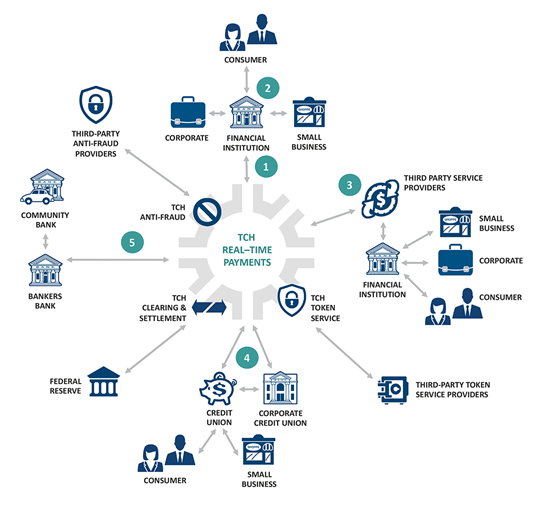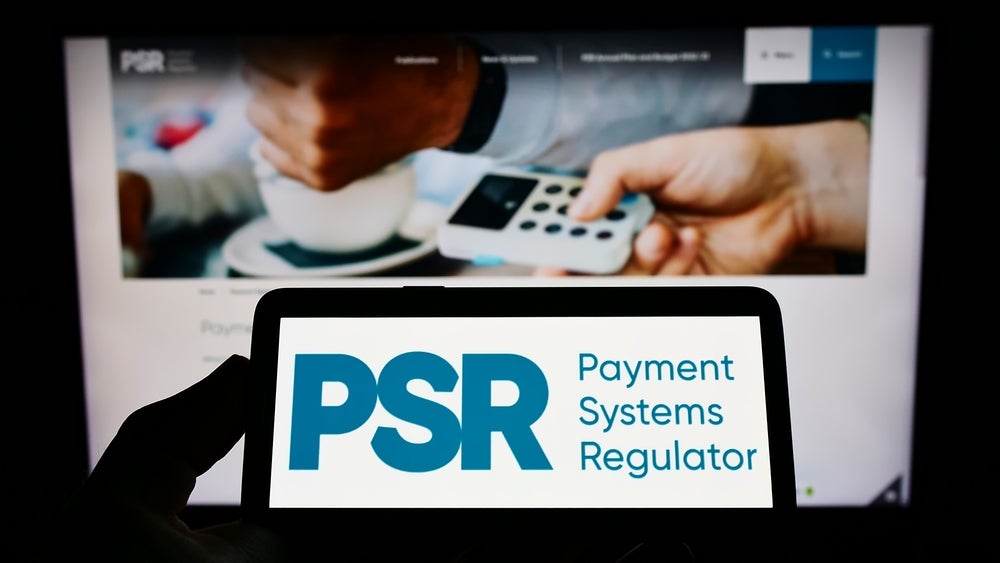
The US began its migration to Faster Payments later than other countries such as the UK and Australia and hopes to complete the process by 2020. A key advantage is that US payments networks can learn from these countries’ experiences, Robin Arnfield reports
“Our Faster Payments dialogue started in 2013, ten years after the Check 21 cheque truncation initiative,” says Sean Rodriguez, Executive VP, Federal Reserve Bank of Chicago. “The Fed began discussions with the payments industry to determine how to make improvements in the US. We then released a consultation paper in 2013 followed by a 2015 report called ‘Strategies for Improving the US Payments System (SIPS).’”
The SIPS report included five desired outcomes:
- Improve the U.S. payment system’s speed;
- Improve payment security;
- Improve efficiency;
- Improve cross-border capabilities to and from other countries;
- Achieve all the above with industry collaboration.
No mandate
“The Fed can’t mandate the introduction of Faster Payments, as many other countries were able to do for their Faster Payments migration,” says Rodriguez. “We knew we had to do this via collaboration between interested stakeholders rather than through a legislative mandate from Congress. To get started, we set up a Faster Payments taskforce and a secure payments taskforce in mid-2015.”
There were 15-20 Faster Payments solutions in place around the world in 2015, and today there around 50 countries with Faster Payments systems in place or in development, says Rodriguez.
How well do you really know your competitors?
Access the most comprehensive Company Profiles on the market, powered by GlobalData. Save hours of research. Gain competitive edge.

Thank you!
Your download email will arrive shortly
Not ready to buy yet? Download a free sample
We are confident about the unique quality of our Company Profiles. However, we want you to make the most beneficial decision for your business, so we offer a free sample that you can download by submitting the below form
By GlobalDataThe latest is Australia, whose New Payments Platform’s central Faster Payments infrastructure is due to go live by the end of 2017. According to a New Payments Platform spokesperson, participants will launch services for their customers in early 2018.
“We realised we needed to increase the speed of our payments system to keep up with what was happening in the rest of the world,” Rodriguez says. “In the US, we have a complex banking system, so moving toward a Faster Payments environment takes considerable effort and coordination.”
The Fed’s Faster Payments Task Force published the first part of its final report in January 2017 and the second part in July 2017 (http://FasterPaymentsTaskForce.org).
“The Task Force, comprising over 300 people from different stakeholder segments, created a set of Faster Payments criteria that describe the kind of system we want to achieve,” says Rodriguez. “We invited solution providers to give their views by submitting proposals and hired a consultancy to review the proposals against the criteria the taskforce established. When the Task Force finished its work in July 2017, we decided on ten key recommendations to keep the momentum going, along with a roadmap and timeline for moving forward.”
Private-sector developments
“Our idea was not to impede any private-sector marketplace developments,” says Rodriguez. “It was important that the process should complement marketplace activity, not inhibit it.”
The Fed’s ten recommendations were laid out as logical next steps forming a call to action to realize the Task Force’s vision of Faster Payments in the US by 2020, Rodriguez says.
“One of the main drivers of our effort to improve the US payments system is the growth in consumer acceptance and use of digital payments,” he says. “Fortunately, we aren’t trying to fix a system that is broken, but we are trying to add more features and cater to future business and consumer demand for a real-time exchange of value. Our vision statement targets 2020 and we think payments improvements can, and will be, made to happen by then.”
“The Fed isn’t planning to be in the market with Faster Payment solutions of our own, but we’ve launched a work effort to look at what we can do to help the market achieve faster payments, for example directory services or network access,” Rodriguez says. “Quite frankly, it has yet to be determined what our specific role will be in a Faster Payments ecosystem.”
Interoperability
“A difficult, but nonetheless achievable, goal is to bring about ubiquity in faster payments, as the taskforce recommended,” Rodriguez says.
Ubiquity means that consumers and businesses will be able to make real-time payments and transfers from accounts at any US financial institution to account at any other FI, just as they can today with the Federal Reserve Banks’ US wire transfer and ACH (automated clearing house) networks.
Rodriguez says that the Clearing House, which operates a private-sector alternative ACH and wire transfer network to the Fed’s systems, as well as the card networks and P2P platforms such as Zelle are all working hard to connect everyone to Faster Payments in the US.
“There is dialogue between operators and different service providers to figure out how to ensure that everyone can be connected regardless of the size of their financial institution,” he says. “You would expect that the same ubiquity and interconnectedness that prevails in ACH transfers and wire transfers would also apply to Faster Payments transactions.”
Momentum
“We were concerned that, once the Task Force issued its final report and ended its business in July 2017, that the momentum toward Faster Payments might slow down,” says Rodriguez. “That hasn’t been the case and we’re working now with the payments industry on a Faster Payments governance framework and a directory workgroup.
“The Fed and the industry are looking at recommendations that have been laid out for moving forward and so the momentum now is as fresh as it has ever been. We can learn from other countries and markets that have gone before us such as the UK and Australia. There are clear advantages in not being the first mover in making payments system improvement.”
Unlike the UK, which moved to Faster Payments a decade ago, the US will implement the ISO 20022 messaging standard in its Faster Payments networks, EPI understands. The UK is now looking to update its networks to ISO 20022.
The Electronic Funds Transfer Association
“The Fed has got a lot of industry support and, by acting as a catalyst, really got the ball rolling on the Faster Payments project,” says Kurt Helwig, President and CEO of US payments industry group EFTA. “Now the majority of the Fed’s Faster Payments work is done, they are focusing on some governance issues and trying to understand what the Fed’s role in Faster Payments should be, going forward.”
Other countries, especially those with fewer financial institutions than the US, have had an easier task in their payments improvement journey.
“Trying to compare the US Faster Payments initiative with other countries’ Faster Payments experience isn’t an apple-to-apple comparison,” says Helwig. “You can mandate a top-down Faster Payments move in countries with a small number of banks, but that wouldn’t work in the US.
The marketplace has been evolving in the US to Faster Payments, and some US companies already have Faster Payment solutions such as Zelle and the Clearing House’s RTP (Real-Time Payments) system. Faster payments won’t happen overnight in the US, but the marketplace is responding to the demand for Faster Payments.”
Other Faster Payments initiatives
While still a small player in terms of overall US payments volumes, PayPal-owned P2P payments platform Venmo has seen rapid growth. According to a blog by McKinsey & Company consultants Rob Hayden and Liz Oakes, Venmo’s exchanged value increased from $906m in the fourth quarter of 2014 to $3.2 billion in the first quarter of 2016.
A blog by Glenbrook Partners consultant Elizabeth McQuerry notes that, responding to the faster payment capabilities of PayPal and Venmo, US financial institutions now have five faster payment rails:
- “Push to Cards – both major networks have developed a credit push payment option for their issuers via Mastercard Send and Visa Direct. Notably, both have cross-border capabilities;
- Running batch processes more frequently, the NACHA (National Automated Clearing House Association) network is now offering Same Day ACH credits and debits. NACHA oversees the US national ACH infrastructure;
- Bank-owned consortia have brought two new Faster Payments services to the U.S.:
- Zelle, initially targeting the peer-to-peer use case, and
- Real-time Paymentsfrom The Clearing House, which is also likely to be extended cross-border in the future.”
“This is a remarkable amount of innovation, even in today’s fast-paced payments industry. All of these services aspire to be the dominant provider in their space,” McQuerry wrote. “But these new instant payment services in the US exhibit limited interoperability.”
“The ACH system operated by NACHA has moved from next day to same day, but that isn’t real-time,” says Cary Whaley, First Vice President, Payments and Technology Policy at the Independent Community Bankers of America, a trade association for small banks. “The funds sent shows up on the recipient’s statement next day.”
Zelle
A near-real-time P2P digital payments network operated by bank-owned consortium Early Warning, Zelle was previously called ClearXchange.
In October 2017, Zelle announced a surge in Q3 payments, resulting in over 60 million P2P payments valued at $17.5bn.
Bank of America says its customers made over 5 million Zelle transactions, totalling $1.5bn dollars in October 2017, up 90% from P2P transactions for the same period last year. One of Early Warning’s owners, Bank of America now has over 2.5 million active monthly Zelle P2P users.
Zelle’s mobile app enables users to make mobile payments from their bank accounts and Visa or Mastercard debit cards, even if their financial institution isn’t part of the consortium of 30 banks that backs Zelle.
The app, which competes against services such as Venmo and Square Cash, also allows users to split payments.
In November 2017, Zelle said it had selected ACI Worldwide as a technology partner, providing integration for financial institutions to connect to the Zelle Network.
The Clearing House
The Clearing House (TCH), which is owned by 30 banks, launched its RTP system in November 2017. In a statement, TCH said this is the first new core payment system to be developed in the US in over 40 years.
BNY Mellon, U.S. Bank, Citi, J.P. Morgan, PNC and SunTrust are the first banks to adopt RTP, which was built using technology from Mastercard-owned Vocalink
The RTP platform will support e-invoicing, bill payments, insurance claim payments and cash-on-delivery payments. RTP also provides immediate confirmation alerts that payments have been sent and received.
“RTP will be fully available in Q1 2018,” says the ICBA’s Whaley. “Instead of batch processing, the RTP will receive single entries in real time. The Clearing House’s strength is that it will be doing 80% of the transactions of the present US electronic payments volume, but that only involves a handful of big US banks. For Faster Payments to work, they must be ubiquitous for every US bank, credit union and community bank.”
Whaley notes that TCH is working with three major service providers in the US banking and payments space. “It hopes these three providers will enable it to reach the majority of the US banking industry,” he says.
“But this remains to be seen. As a comparison with the Clearing House, a small bank can develop a P2P app that lets its customers send money to any banked person in the US because that small bank uses the national ACH Network. The reason there is ubiquity in the ACH Network is because the Fed is involved in it and connects the big banks plus the smaller community banks and credit unions to it. The Clearing House will need to build that ubiquity, and this isn’t going to come immediately.”
Ecosystem
Whaley says the ICBA is very concerned that the Fed hasn’t committed to the role of ensuring ecosystem ubiquity and interconnection between US banks and credit unions for real-time payments.
“The ICBA, the Credit Union National Association, and the National Association of Federally-insured Credit Unions wrote to the Fed in April 2017 asking it to play an operational role in real-time payments,” he says. “This wouldn’t be providing a regulatory mandate but facilitating universal access and ensuring that financial institutions, since they have to connect to the Fed, would have to accept all payments that come via the Fed.”
The letter said the ICBA, CUNA, and NAFCU support the Fed providing central bank settlement capabilities to support all Faster Payment service provider functionality. “Beyond settlement capabilities, our organisations see three possible operational roles for the Fed,” it said.
“First, the Fed could serve as an on-ramp to real-time payments, leveraging its connectivity among financial institutions to provide all with access to real-time payments. Second, the Fed could serve as an operator for real-time payments, a role the Fed currently serves for cheques, ACH payments, and wire transfers.
“Lastly, the Fed could operate a payments directory which could link to financial institutions, as well as to other private-sector payments directories. While there are many real-time payment applications in operation or under development, the work of the Faster Payments Task Force suggests none are likely to reach all financial institutions.
“We don’t believe any of the potential private-sector Faster Payments service providers will be committed to the same level of safety, transparency, equitable access, and ubiquity as the Fed.”








